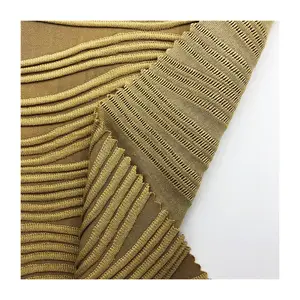
New Design Good Stretch Wave Stripe Jacquard Fabric 95%polyester 5%spandex Piece Dyed 3D Knitting Fabric For Garments


Factory Price Good Strength White Color Non Woven Fabric Jumbo Rolls For The Backing Of Wall Cloth Wallcloth/Wall Covering


















Cut pieces textiles represent a specialized category within the textile industry, focusing on pre-cut fabrics that cater to diverse manufacturing needs. These textiles are precut into specific shapes and sizes, streamlining the production process for clothing, upholstery, and other fabric-based items. This segment includes a variety of colors and patterns, such as vibrant hues, assorted mixes, and deeper tones, to suit different design preferences.
The range of cut pieces textiles extends to various types, each serving distinct sectors. Marine-grade textiles, for instance, are designed to withstand harsh marine environments, while recycled textiles appeal to eco-conscious practices. The application of these textiles is broad, covering areas from garment construction to interior design, highlighting their versatility in both commercial and industrial settings.
Cut pieces textiles are available in woven and knitted forms, each offering unique benefits. Woven textiles are known for their strength and durability, making them ideal for items that require structural integrity. Knitted textiles, on the other hand, offer elasticity and comfort, perfect for apparel that demands flexibility. The advantage of using pre-cut textiles lies in their convenience, reducing waste and saving time in the production cycle.
Quality in cut pieces textiles is determined by the fabric's weave or knit density, fiber quality, and colorfastness, ensuring that the textiles meet the functional requirements of their intended use. Sustainability is another critical aspect, with a growing selection of cut pieces made from recycled materials, supporting the industry's shift towards environmentally responsible manufacturing.
Selecting the appropriate cut pieces textiles involves considering the end product's needs, such as durability, stretchability, and aesthetic appeal. It is essential to match the textile's characteristics with the project's requirements to ensure optimal performance and appearance.
In conclusion, cut pieces textiles offer a practical solution for various sectors within the textile industry. With an array of types, applications, and benefits, these textiles provide a tailored approach to fabric selection, emphasizing efficiency and sustainability. As the industry evolves, the demand for pre-cut textiles is likely to grow, reflecting the ongoing innovation in textile manufacturing and design.